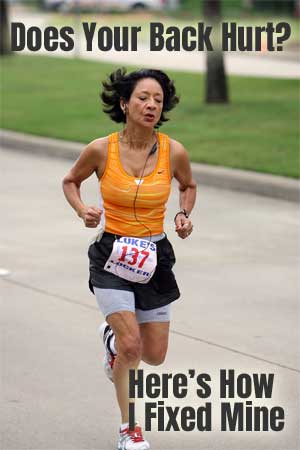 The beginning of each year marks a time when many people set goals to lose weight and get in shape. Running is a common sport that people choose, simply because it requires minimal equipment and skill to start.
The beginning of each year marks a time when many people set goals to lose weight and get in shape. Running is a common sport that people choose, simply because it requires minimal equipment and skill to start.
However, proper form is essential to injury-free running – as well as good shoes. Stretching and recovery are also equally important, though a large majority of new runners overlook this aspect of fitness. Side-stepping these four pieces of the pie often lead to lower back pain, injuries and burnout.
Now here’s a recipe for disaster: People who are typically sedentary deciding to start-up a high-impact running routine several days a week. They don’t buy well-fitted shoes or they aren’t aware of good running form or they don’t allow adequate time to stretch and rest between workouts. Maybe all of the above!
Tips to Prevent Back back from Running, Including Inversion Therapy:
1. Buy the Correct Running Shoes to Avoid Back Pain
Visit your local running shoe store to learn the right shoes to buy for your feet and body. Then, you decide whether or not you actually buy the shoes at the store you visit. Basically, you can learn what shoe features to look for (ie. do you pronate, do you need extra cushioning, etc..)
2. Learn the Right Way to Run to Prevent Injury
Get an instructional book (I like Chi Running) that explains proper form and how to practice it. In addition to avoiding injuries, good form also makes the activity of running easier so that you can go for longer periods of time without tiring so quickly.
3. How to Apply Inversion Therapy for Runners
 Use an inversion table to stretch out your joints to allow them to recover faster from the repetitive high-impact movement. Yes, you don’t need special equipment to achieve a good stretch.
Use an inversion table to stretch out your joints to allow them to recover faster from the repetitive high-impact movement. Yes, you don’t need special equipment to achieve a good stretch.
However, hanging upside down or laying partially inverted simply takes stretching to the next level. Plus it can be a great tool for those who sit all day long at a desk or who participate in other impact sports or who are already experiencing lower back pain.
According to Ironman.com, many athletes (novice or not) wait until they experience pain to fix a problem. The downside to this is that, of course, they have to deal with the pain but also they may have to subject themselves to being inactive for long periods of time in order to recover.
Prevention is the preferred alternative. This usually means stretching and allowing for rest periods on a regular basis and incorporating them into your ongoing workout routine. Lots of health professionals suggest core workouts such as pilates as well as massage.
Bulging discs in the back can sometimes results from muscle imbalances and therefore strength training can help. That said, don’t try to diagnose yourself without seeing a physician!
I can also list more benefits of inversion, such as improved posture and increased circulation. Therefore, many athletes feel that they get a great value from a $150 inversion table.
 Another option for better recovery, especially if you sit for long periods at a desk, is using a stability ball as a chair. These fitness balls help the core stay engaged while sitting, and they can also help align the spine in a more ideal posture while in the seated position.
Another option for better recovery, especially if you sit for long periods at a desk, is using a stability ball as a chair. These fitness balls help the core stay engaged while sitting, and they can also help align the spine in a more ideal posture while in the seated position.
Furthermore, you can use these inexpensive balls for stretching and core-strengthening exercises that you do at home. I love them, plus I use one myself. =)
